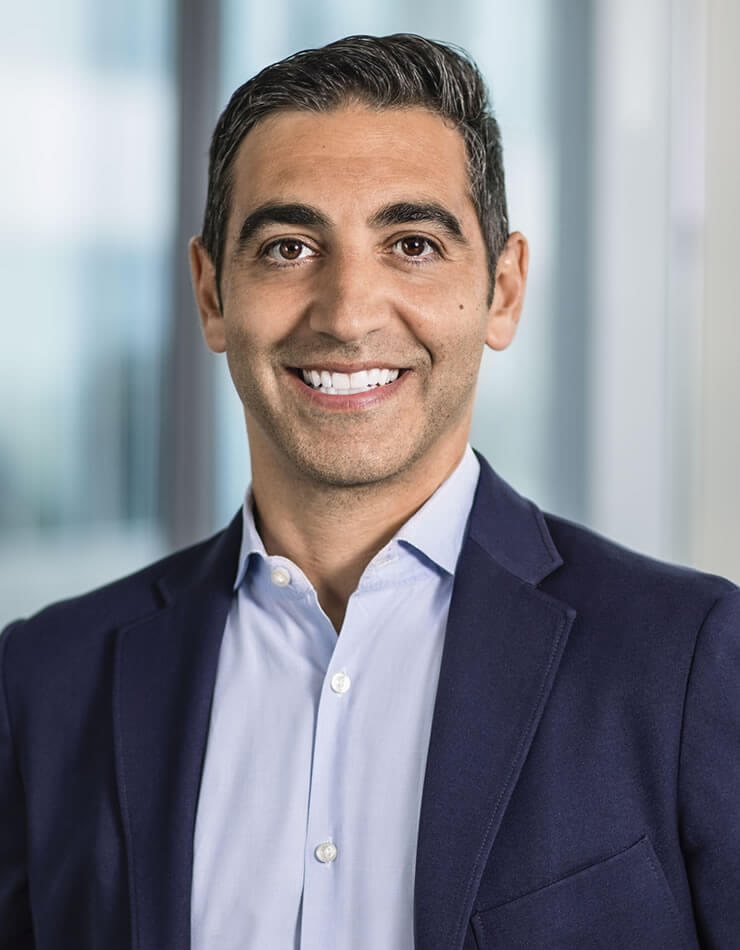Oakmark Equity and Income Fund – Investor Class
Average Annual Total Returns 06/30/23
Since Inception 11/01/95 9.47%
10-year 7.47%
5-year 6.77%
1-year 11.88%
3-month 5.33%
Expense Ratio: 0.83%
Expense ratios are from the Fund’s most recent prospectus dated January 28, 2023; actual expenses may vary.
Past performance is no guarantee of future results. The performance data quoted represents past performance. Current performance may be lower or higher than the performance data quoted. The investment return and principal value vary so that an investor’s shares when redeemed may be worth more or less than the original cost. To obtain the most recent month-end performance data, view it here.
Magnificent Seven?
Our title does not refer to the 1960 Western movie (or its remake) or even the 1954 Japanese film on which both were based. Rather, we are referring to the seven large-capitalization growth stocks (Alphabet, Amazon, Apple, Meta Platforms, Microsoft, Nvidia and Tesla) that have accounted for the majority of the U.S. stock market’s gains this year. Market gains have been strongly concentrated before (like in 1999 or with the Nifty 50 of the early 1970s), but the current degree of concentration is unprecedented. As was the case in the late 1990s (remember the dotcoms?), a seductive story has excited investors. Artificial intelligence, the flavor du jour, is the new speculative attraction of almost limitless possibilities, despite the substantial uncertainty as to how and when those possibilities might be realized.
Market strategists are divided concerning the implications of this market phenomenon. Some note that stock markets with narrow leadership sometimes broaden out, and we may have seen signs of this at the end of June. Others, however, predict a bear market, especially if interest rates continue to rise. Our opinion is that many technology stock valuations are at least aggressive, and we have been reducing our already underweight exposure to that sector.
The Oakmark Equity and Income Fund (“the Fund”) gained 5.3% in the quarter, which contrasts with the 3.2% return to the Lipper Balanced Fund Index. For the calendar year to date, the Fund’s return is 8.8% compared to a 7.6% return to the Lipper Index. We are pleased to report that the Fund’s compound rate of return since inception in 1995 is 9.5%, while the corresponding return to the Lipper Index is 6.8%.
Amazon, Alphabet, Oracle, Lithia Motors and Thor led the list of contributors to return in the quarter. The first three companies benefited from the technology industry surge, and improving fundamental factors boosted Thor and Lithia. The Warners (Warner Bros. Discovery and Warner Music Group) led the detractors’ list, followed by Sealed Air, NOV and State Street. Winners/losers for the six months were somewhat similar, and Amazon, Alphabet and Oracle repeated at the top. Two financial industry companies led the six-month detractors’ list, however. Charles Schwab and Bank of America both reported material mark-to-market unrealized losses in their marketable securities holdings, an outcome of the increase in interest rates early in the year.
Transaction Activity
Stock market strength as well as two acquisition proposals provoked a higher than normal level of trading activity in the quarter. Private equity firm Apollo contracted to purchase Fund holding Arconic, and we took advantage of the ensuing share price increase to eliminate our holding. Chevron and Fund holding PDC Energy also negotiated a purchase transaction, although in this case, we did not find the transaction price to be as compelling. PDC owns and operates oil and natural gas properties in Colorado and Texas. By our reckoning, PDC is selling itself too cheaply, but Chevron doubtless knows the properties better than we ever could. We will learn from the economics implied in this transaction. Although we had hoped for more, PDC was nevertheless a fine holding for the Fund, and we continue to retain some shares. The other complete eliminations were Booking Holdings, ChampionX and NOV. Booking and ChampionX were both nearing their sell targets, while NOV, though a profitable holding, was failing the test of growing its intrinsic value per share in our opinion.
We initiated four new holdings during the quarter, three of which were in the health care sector, a sector where we previously had only a small portfolio weighting. Our analysts are all generalists (i.e., not industry specialists), and the three new health care investments reflect the work of three different individuals. When we see a previously underrepresented sector receiving this sort of attention, it usually means that the sector has been out of favor with investors long enough to produce interesting opportunities. If current market trends continue, it would not surprise us to find additional health care issues working their way into the portfolio.
Beginning alphabetically, Baxter is a high-quality provider of medical devices and supplies that are critical to patient care. Demand for the company’s broad range of products tends to produce stable, predictable growth. Key competitive advantages include leading scale, a large installed base and long-term customer relationships. A value-focused management team that we’ve invested alongside in the past leads the company. Baxter’s share price declined significantly over the past year as inflation, semiconductor shortages and other ripple effects from Covid-19 pressured margins, which investors have wrongly extrapolated into the future. These short-term concerns provided us the opportunity to purchase Baxter at an attractive price, well-below historical and peer valuation levels. Taking a longer term view, we believe Baxter has numerous levers to improve margins, and as this happens, we expect earnings and sentiment to improve, along with a corresponding increase in share price.
ConocoPhillips is one of the largest and most efficient U.S. exploration and production companies in the country. The company has an extensive resource base of high-quality drilling inventory in the U.S. and various international locations as well as a growing liquified natural gas business. In our view, the depth and quality of ConocoPhillips’s inventory are competitive differentiators not fully captured in the current share price. Over the next 10 years, we believe ConocoPhillips will be able to return over 100% of its current market capitalization to shareholders via dividends and share repurchases while growing its production at a mid-single-digit annual pace. In our view, ConocoPhillips is also among the best managed companies in the oil and gas industry, and we are impressed by its history of accretive capital allocation under CEO Ryan Lance. The stock has meaningfully underperformed the broader market since we last owned shares in late 2022, and it is once again an attractive addition to the Fund. Please note that with sales of both ChampionX and NOV and the reduction in the PDC Energy holding, the ConocoPhillips purchase merely maintains the Fund’s energy weight.
We also initiated a position in Danaher, a global leader in life sciences that maintains a portfolio of businesses primarily focused on bioprocessing, life science tools, genomics and diagnostics. In our view, Danaher has an excellent track record of creating shareholder value through smart capital allocation and world-class operational execution. The firm’s Danaher Business System employs a rigorous, process-driven approach to operational improvement that’s helped accelerate organic growth and expand margins through multiple leadership regimes. Danaher’s business mix has shifted dramatically in recent years after a series of transformative acquisitions and divestitures. We believe these portfolio moves leave the company attractively positioned in some of the industry’s fastest growing, most profitable niches. Near-term headwinds related to the pandemic are overshadowing this attractive long-term outlook. Danaher sells diagnostic tests and critical inputs needed for manufacturing Covid-19 vaccines. As Covid-19 demand normalized, Danaher experienced sales headwinds and channel destocking on these products, which pressured the stock. It now trades at a discounted valuation relative to peers and private market transactions, which provided an attractive entry point to invest in this high-quality, resilient business.
Fears about biotech funding and the sell-off in the broader life sciences area created an opportunity for us to invest in IQV during the quarter. IQV is a leading provider of clinical trials and health care technology and analytics, which was formed through the 2016 merger of Quintiles and IMS Health. We believe that IQV is well-positioned to take advantage of the trends toward advanced therapeutics and personalized medicine. IQV has additional growth opportunities due to its ability to deliver real-world evidence that enables biopharma companies and other health care providers to meet regulatory and reimbursement mandates. CEO Ari Bousbib has a strong track record on operations and capital allocation, and his large equity holdings in the company make him significantly invested in the company’s success. We were pleased to purchase IQV near a trough multiple of less than 15x our estimate of normal earnings.
First Principles
Economist and Professor Harry Markowitz died in June. His research 70 years ago is generally credited with laying the foundation for modern portfolio theory, which even today remains central to the academic study of investing. Markowitz was probably the first to codify and quantify the benefits of diversification in portfolio construction, the central idea being that portfolio riskiness is more a function of how portfolio components interrelate rather than the riskiness of each security.
In managing the Equity and Income Fund, we accept the merits of diversification. We invest the Fund in both stocks and fixed income investments because the two asset classes generally have uncorrelated returns. This low correlation works to reduce portfolio volatility, an important factor for many investors. But we primarily seek to reduce portfolio risk by owning securities that are priced well below their intrinsic value. This means that when a holding declines in price, it has become even more attractive, and we should purchase more. We believe that this approach works to reduce downside risk and positions the portfolio to capture upside volatility.
Another key principle undergirding our investing in the Equity and Income Fund is that we see the Fund as an integrated unit, not different asset types stapled together. All securities appropriate for this Fund’s objectives compete for space within the portfolio.
Finally, our ability to identify dominant investment opportunities determines the Fund’s asset allocation. If attractive equities are plentiful, the Fund’s equity allocation will be higher than the average. In contrast, should the prospective returns from fixed income investments become compelling, we will weigh that sector more heavily. The fact that the Fund’s current asset allocation is near average levels (60% stocks/40% fixed income) suggests that at the time of this report, neither asset class dominates.
We have managed the Equity and Income Fund in the same manner for all of its nearly 28-year existence. Our understanding of how to determine value continues to evolve, but our fundamental principles remain constant. We still believe that a value-based, multi-asset class fund offers considerable utility to investors. It can be a complete investing program or the core holding of a more complex portfolio.
In closing, we thank Professor Markowitz for his seminal work in investment theory. And, as always, we thank our fellow shareholders for investing with us in the Equity and Income Fund.
The securities mentioned above comprise the following preliminary percentages of the Oakmark Equity and Income Fund’s total net assets as of 06/30/23: Alphabet Cl A 2.9%, Amazon.com 2.8%, Apple 0%, Arconic 0%, Bank of America 2.5%, Baxter 0.9%, Booking Holdings 0%, ChampionX 0%, Charles Schwab 1.1%, Chevron 0%, ConocoPhillips 0.5%, Danaher 0.7%, IQVIA Holdings 0.6%, Lithia Motors Cl A 1.3%, Meta Platforms 0%, Microsoft 0%, NOV 0%, Nvidia 0%, Oracle 1.1%, PDC Energy 1.6%, Sealed Air 0.6%, State Street 1.1%, Tesla 0%, Thor Industries 1.3%, Warner Bros Discovery 0.8% and Warner Music Cl A 1.0%. Portfolio holdings are subject to change without notice and are not intended as recommendations of individual stocks.
The Bloomberg Barclays U.S. Government/Credit Bond Index measures the non-securitized component of the U.S. Aggregate Index. It includes investment grade, U.S. dollar-denominated, fixed-rate Treasuries, government-related and corporate securities. This index is unmanaged and investors cannot invest directly in this index.
The S&P 500 Total Return Index is a float-adjusted, capitalization-weighted index of 500 U.S. large-capitalization stocks representing all major industries. It is a widely recognized index of broad, U.S. equity market performance. Returns reflect the reinvestment of dividends. This index is unmanaged and investors cannot invest directly in this index.
The Lipper Balanced Fund Index measures the equal-weighted performance of the 30 largest U.S. balanced funds as defined by Lipper. This index is unmanaged and investors cannot invest directly in this index.
The Fund invests in medium- and lower-quality debt securities that have higher yield potential but present greater investment and credit risk than higher-quality securities, which may result in greater share price volatility. An economic downturn could severely disrupt the market in medium or lower grade debt securities and adversely affect the value of outstanding bonds and the ability of the issuers to repay principal and interest.
The Oakmark Equity and Income Fund’s portfolio tends to be invested in a relatively small number of stocks. As a result, the appreciation or depreciation of any one security held by the Fund will have a greater impact on the Fund’s net asset value than it would if the Fund invested in a larger number of securities. Although that strategy has the potential to generate attractive returns over time, it also increases the Fund’s volatility.
The information, data, analyses, and opinions presented herein (including current investment themes, the portfolio managers’ research and investment process, and portfolio characteristics) are for informational purposes only and represent the investments and views of the portfolio managers and Harris Associates L.P. as of the date written and are subject to change and may change based on market and other conditions and without notice. This content is not a recommendation of or an offer to buy or sell a security and is not warranted to be correct, complete or accurate.
Certain comments herein are based on current expectations and are considered “forward-looking statements”. These forward looking statements reflect assumptions and analyses made by the portfolio managers and Harris Associates L.P. based on their experience and perception of historical trends, current conditions, expected future developments, and other factors they believe are relevant. Actual future results are subject to a number of investment and other risks and may prove to be different from expectations. Readers are cautioned not to place undue reliance on the forward-looking statements.
All information provided is as of 06/30/2023 unless otherwise specified.










